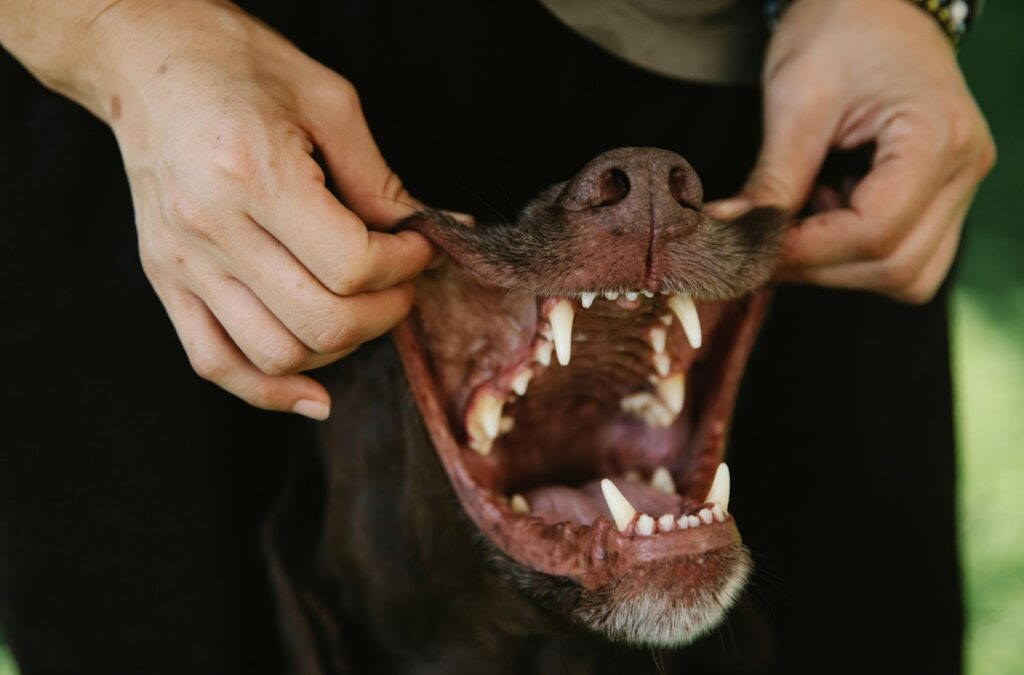Caring for a puppy or older involves more than just walks and cuddles; it includes their dental health too. Just like humans, dogs can suffer from dental diseases, which can lead to serious health issues if left unattended. While we may understand this, our dogs don’t. This it’s why it’s important to introduce your dog, whether a playful puppy or a distinguished older dog, to the routine of teeth brushing.
By approaching this task with patience, consistency, and the right techniques, you’ll not only enhance your dog’s quality of life but also raise your dog’s confidence.
Introduction to the Importance of Dental Care in Dogs
Dental care in dogs is often overlooked, but it’s as crucial as any other aspect of their health. Neglecting dental hygiene can lead to plaque build-up, gum disease, tooth loss, and can even cause serious complications like heart diseases (common to breeds like Poodles, Terriers, and Cavalier King Charles. Regular brushing removes plaque, prevents tartar accumulation, and keeps those dreaded diseases at bay. By prioritising dental care, you’re not just ensuring a set of pearly whites but also contributing to your dog’s overall well-being and longevity.
Understanding Your Dog’s Perspective
Imagine someone poking around your mouth with an unfamiliar object—it’s not the most comfortable scenario, right? Think about how uncomfortable you might be going to the dentist. That’s how your dog might feel about teeth brushing initially. Dogs can be apprehensive or even scared when introduced to new experiences, especially those involving their personal space. Recognizing this fear and approaching the task with empathy is crucial. Your patience and positive reinforcement throughout the process can turn a potentially stressful situation into a bonding experience. Remember, the goal is to make your dog feel safe and comfortable, transforming teeth brushing from a chore into a pleasant part of their routine.
Choosing the Right Tools
The market is flooded with pet dental care products, but not all are created equal. For a successful brushing routine, it’s essential to choose the right tools. A toothbrush designed for dogs, with softer bristles and an angled handle, can make the process easier and more comfortable for your pet. When it comes to toothpaste, never use human toothpaste, as it can contain ingredients toxic to dogs. Opt for a dog-specific toothpaste, preferably one that’s enzymatic, to help break down plaque and tartar effectively. Flavoured toothpaste can also make the brushing experience more enjoyable for your dog.
Familiarisation Process
Gradually introducing your dog to toothpaste and brushing is key. Start by letting your dog taste the toothpaste from your finger. This allows them to get used to the flavour without the added stress of brushing. Next, gently massage their gums with your finger. Once they’re comfortable, introduce the toothbrush, letting them sniff and lick it. These steps help build positive associations with the tools and sensations of teeth brushing.
The Brushing Technique
Now, for the main event—brushing those chompers. Here’s a step-by-step guide to ensure you’re doing it effectively:
- Preparation: Have your toothbrush and toothpaste ready. Position yourself and your dog in a comfortable and calm setting to avoid distractions.
- Application: Apply a small amount of toothpaste to the brush.
- Introduction: Let your dog sniff the toothbrush again to remind them it’s nothing scary.
- Gentle Start: Lift your dog’s lips and gently brush one or two front teeth and the adjoining gums. This initial step should be short to keep them at ease. Praise and reward them for staying calm.
- Gradual Progression: Slowly increase the number of teeth brushed with each session. Use gentle, circular motions to clean the teeth and gums, paying extra attention to the back molars, a common site for tartar buildup.
- Consistency: Aim to brush your dog’s teeth daily, but if that’s not possible, aim for a minimum of three times a week.
Creating a Positive Routine
Turning teeth brushing into a positive experience is crucial for long-term success. Use plenty of praise and some treats to reward your dog after each session. Establish a routine by brushing at the same time and place, creating a predictable and comforting environment. Over time, your dog will start to associate teeth brushing with positive outcomes, making the process smoother for both of you.

